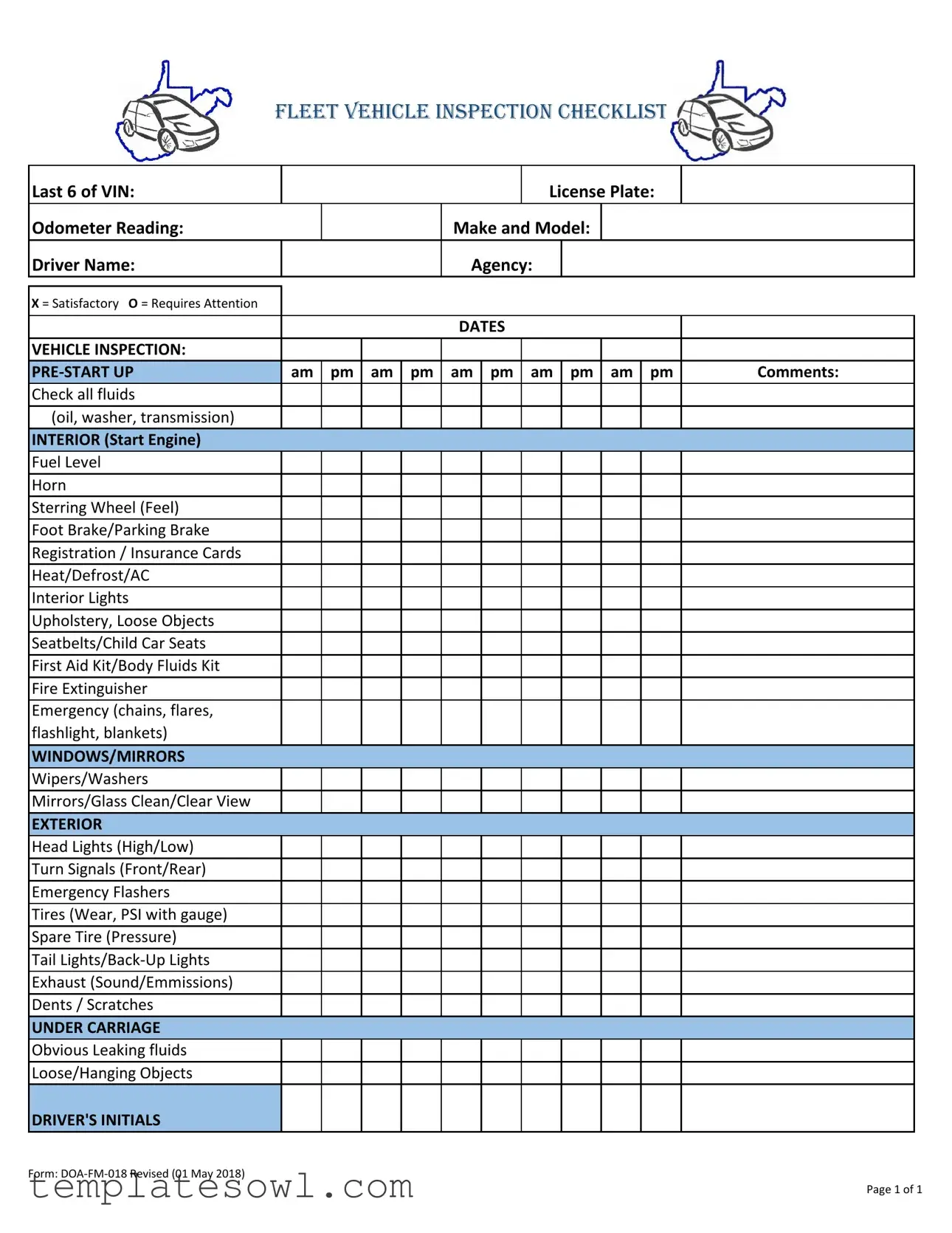What is the purpose of the Fleet Vehicle Inspection form?
The Fleet Vehicle Inspection form is used to assess the condition of vehicles before they are put into service. It ensures that all necessary maintenance checks are completed and that vehicles are safe and ready for use. This helps to prevent breakdowns and accidents, promoting the safety of drivers and passengers.
Who is responsible for completing the inspection form?
The driver assigned to the vehicle is responsible for filling out the inspection form. This includes providing details about the vehicle’s condition as well as noting any issues that require attention. Accountability is crucial in maintaining vehicle safety.
What information is required on the inspection form?
The form requires several key pieces of information including the last six digits of the Vehicle Identification Number (VIN), license plate number, odometer reading, make and model of the vehicle, driver's name, and the agency associated with the vehicle. Ensure that all fields are filled out completely and accurately.
What should I do if I find issues during the inspection?
If you notice any issues, mark them accordingly on the form under the “Requires Attention” section. Make sure to provide comments that explain the problem clearly. This will help maintenance staff address the issues effectively.
What types of checks are included in the inspection?
The inspection covers a wide range of components. You will check fluids, interior features, exterior lights, tire conditions, and more. It is crucial to conduct a thorough assessment to ensure everything is functioning properly.
When should the vehicle inspection be completed?
Inspections should be completed before the vehicle is driven for the first time each day. This ensures that any potential issues are identified and addressed before they lead to problems on the road.
What happens if I cannot complete the inspection?
If you are unable to complete the inspection due to time constraints or other issues, notify your supervisor immediately. It’s important to ensure that someone can perform the inspection to maintain safety standards.
How often is the Fleet Vehicle Inspection form revised?
The form was last revised on May 1, 2018. While there may not be frequent revisions, it is important to keep an eye out for updates to ensure compliance with any new regulations or best practices.
Is a physical inspection always necessary, or can it be done digitally?
A physical inspection is necessary to thoroughly examine all vehicle components. While some documentation may be handled digitally, the actual inspection should be conducted in-person to ensure accuracy and safety.
What happens if a vehicle fails the inspection?
If a vehicle fails the inspection, it should not be used until all issues are resolved. The driver must report the findings to maintenance, and necessary repairs should be made. Safety is the top priority and should never be compromised.

